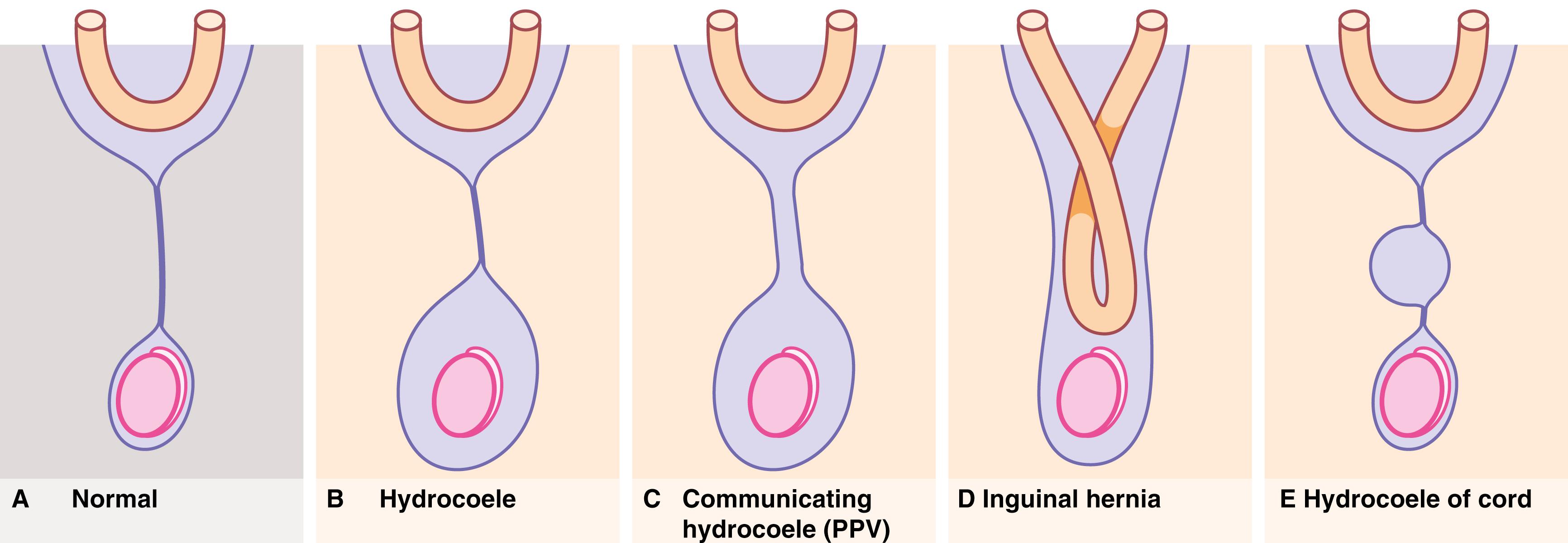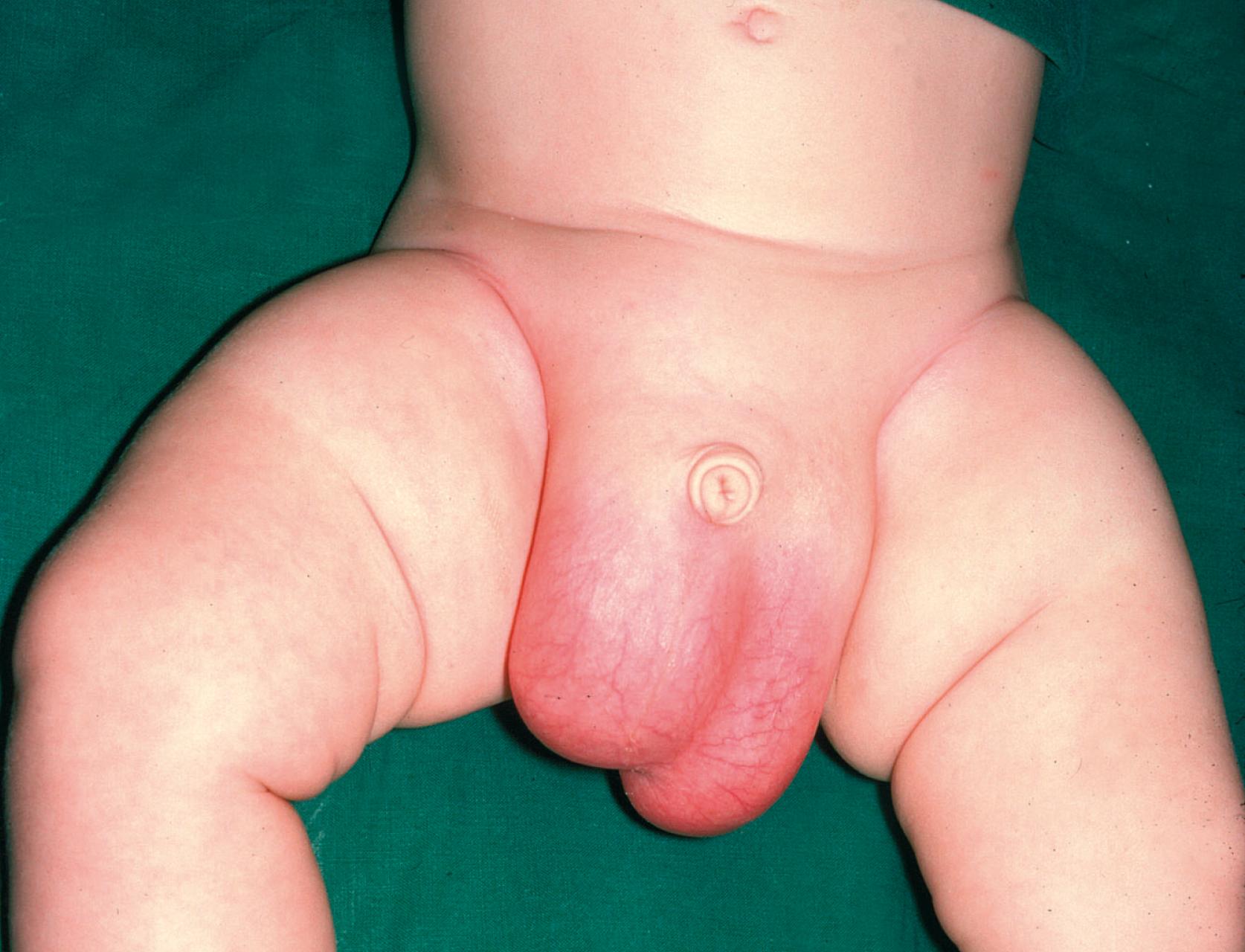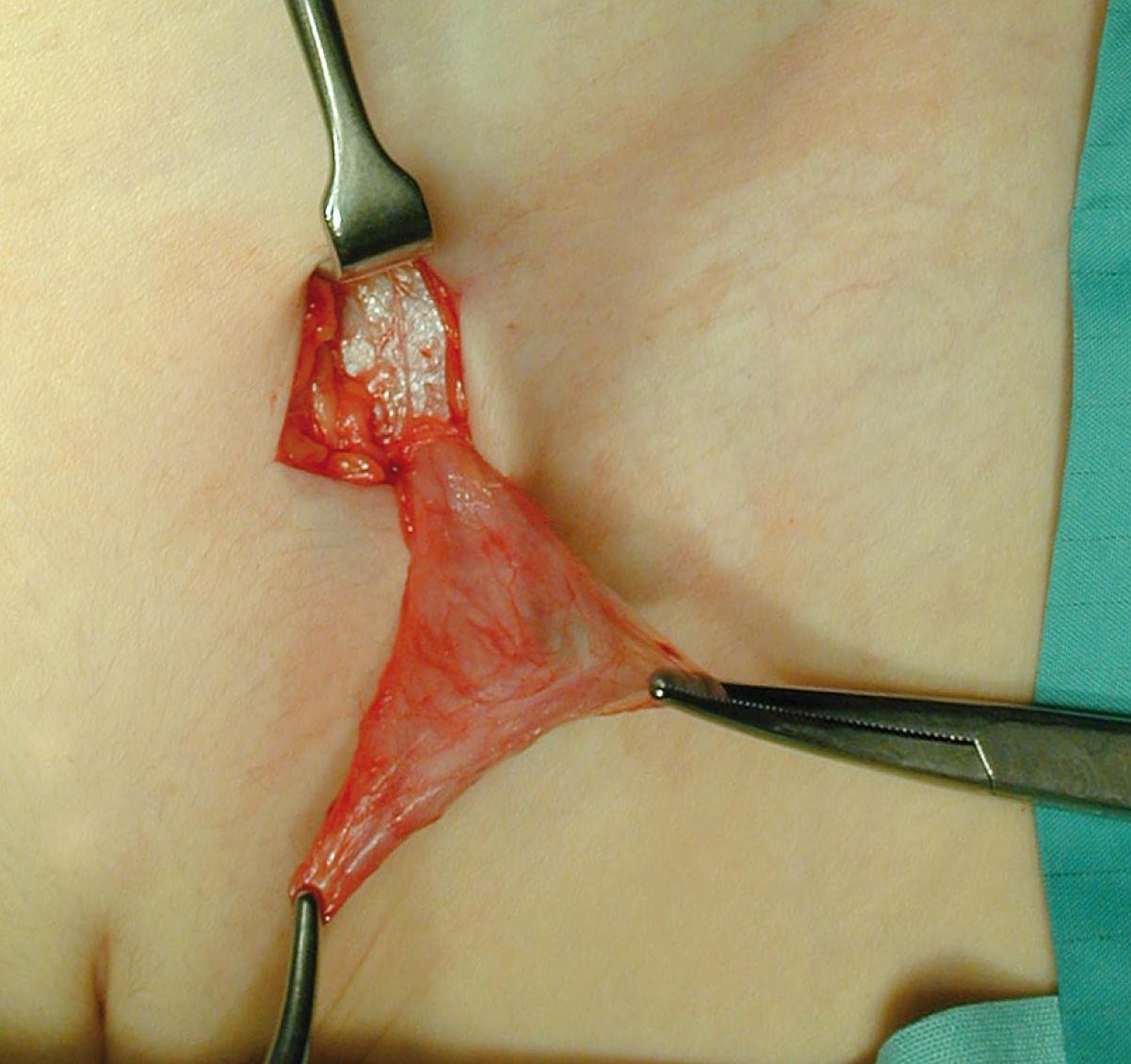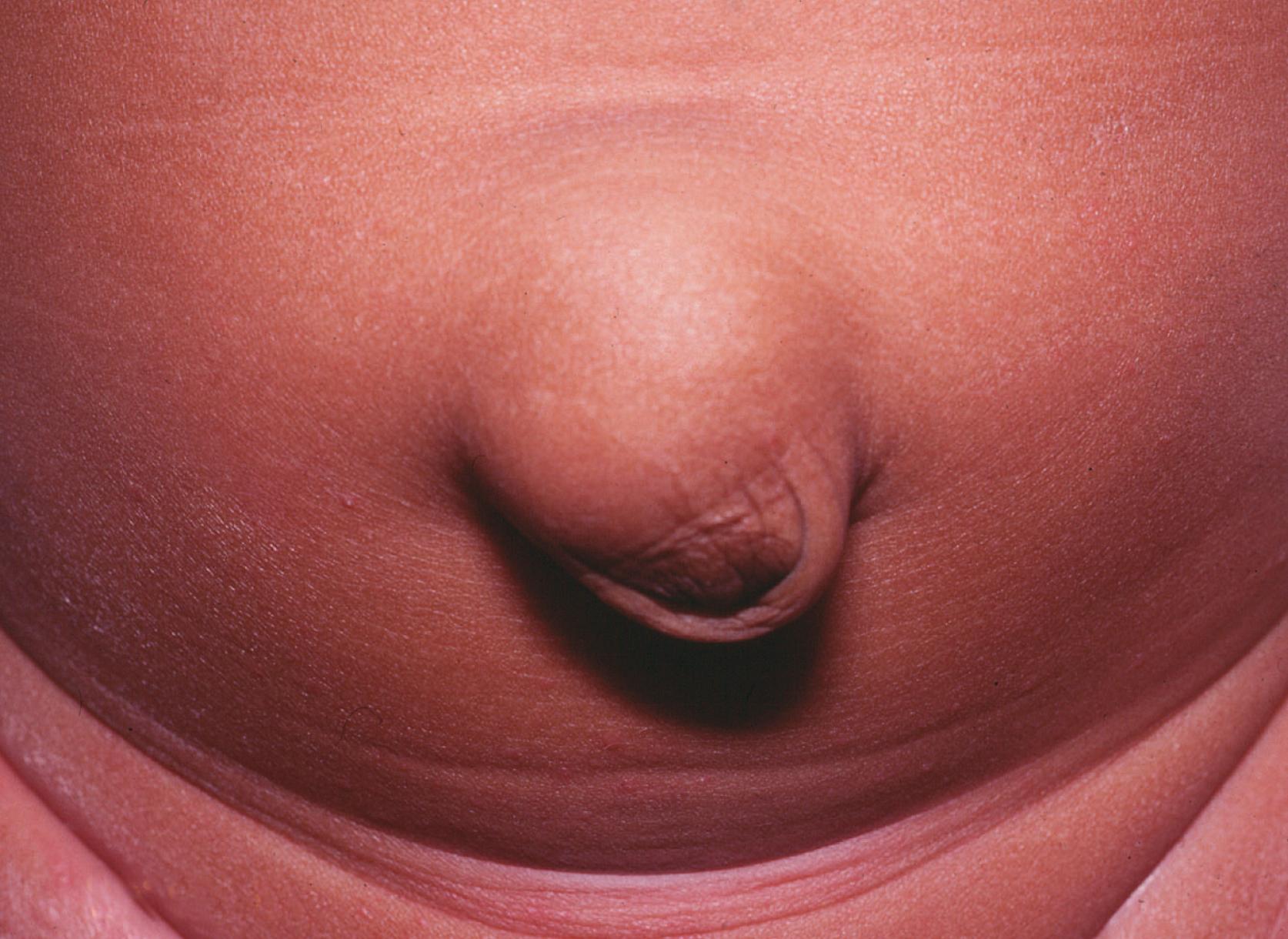Physical Address
304 North Cardinal St.
Dorchester Center, MA 02124
In paediatric surgery, the most important conditions presenting as emergencies are caused by congenital problems presenting in the neonatal period. In contrast to this, nonacute conditions present across the whole age range of childhood. This chapter deals with abdominal and urological problems in children, although it should be remembered that other systems can be affected by disease in childhood. The most common reasons for nonacute surgical referral are hernias and associated problems, abnormalities of testicular descent and foreskin problems. Less often surgeons are asked to manage chronic or recurrent abdominal pain, chronic constipation, rectal bleeding or rectal prolapse. Many of these children present first to a paediatrician and then are referred to a paediatric surgeon.
Importantly, there is a range of urological problems that occur specifically in infancy and childhood. Most of them are unique to young patients, and are dealt with by specialist paediatric surgeons or paediatric urologists, and most significant urinary tract abnormalities are now detected antenatally.
The indifferent gonad (i.e., ovary or testis) begins to develop at the fifth week in the gonadal ridge , part of the mesodermal urogenital ridge that will also form the kidney, ureter and genital ducts, in the male, or uterus and uterine tubes, in the female. At the lower pole of the developing testis, a strand of mesenchyme becomes the cord-like gubernaculum . In the eighth week, a prolongation of peritoneum, the processus vaginalis , appears beside the gubernaculum (or round ligament), and extends into the labioscrotal fold. The testis then migrates distally along the peritoneal canal.
The processus vaginalis normally closes spontaneously soon after birth. Persistence causes three common problems in boys: patent processus vaginalis (PPV), hydrocoele and inguinal hernia, which may all present as inguinal or scrotal swellings, usually in babies and preschool children ( Fig. 51.1 ).

This term should be reserved for hydrocoeles communicating with the peritoneal cavity, via a remnant too narrow to admit bowel. Children with these communicating hydrocoeles present with scrotal swelling that increases during the day, as peritoneal fluid accumulates, and subsides at night. Treatment is excision of the peritoneal remnant by herniotomy performed after the age of 2 years (see later). Before this age, most settle spontaneously.
Non-communicating hydrocoeles are mostly seen in neonates and young babies ( Fig. 51.2 ). The usual type is a scrotal swelling, resulting from incomplete reabsorption of fluid within the tunica vaginalis, after closure of the processus vaginalis. There may be a separate hernia present. These so-called primary hydrocoeles sometimes appear following a viral illness. Rarely, a secondary hydrocoele results from testicular trauma or torsion, epididymitis or a testicular tumour.

On examination, there is a fluid swelling surrounding a normal testis; the sac transilluminates brightly and the testis can be felt posteriorly (but note that neonatal bowel is thin and may also transilluminate brightly in a hernia), and the examiner’s fingers can ‘get above’ the swelling (i.e., it does not communicate with the groin). Ultrasound investigation can be used to clarify the diagnosis. Hydrocoeles also occur in the spermatic cord (hydrocoele of the cord) or in the round ligament in girls, where they are known as hydrocoeles of the canal of Nuck . Most hydrocoeles resolve between 18 and 24 months of age. A hydrocoele persisting beyond the age of 2 years or appearing later may require surgery.
Inguinal hernias in children arise because the processus vaginalis fails to close after testicular descent; they are true congenital abnormalities. Anatomically, they are the same as indirect inguinal hernias in adults (see Ch. 32 ), but without a substantial abdominal wall defect. The incidence in infants ranges from 1% to 4.4%, with a male preponderance of 4:1; 98% are indirect. The incidence in premature neonates is 30% and the overall incidence is increasing in line with the number of premature neonates surviving.
A hernia usually presents as a lump at the external inguinal ring, when the child cries or strains at stool, but then reduces spontaneously. When seen electively, there is often no abnormality, but most surgeons accept a parent’s clear history of a hernia and arrange surgery. With larger defects, a lump is constantly present and expands during crying, and the examiner cannot get above the swelling, that is, the swelling originates in the groin; this is the cardinal feature. The urgency of hernia repair is governed by age; the older, the less likely it will become incarcerated (acutely irreducible). Infants at home should have hernias fixed on the next available operating list. Neonates and preterm infants in hospital should have them fixed before discharge. Older children without episodes of incarceration can have hernias fixed electively.
Inguinal hernias may become acutely irreducible and painful, sometimes with obstructive symptoms, such as vomiting (see Ch. 50 ). In these cases, there is a real risk of testicular necrosis and/or strangulation of the hernia contents, for example, bowel or ovary (see Fig. 50.11 ). In known hernias, parents should be instructed to bring the child to hospital for urgent surgery if it becomes incarcerated, to prevent these risks.
The standard operation is inguinal herniotomy . In babies and children, this involves separating the peritoneal sac from the cord (or round ligament), ligating it at the external ring and removing it. There is rarely any need to perform a repair (herniorrhaphy) ( Fig. 51.3 ) . The incidence of an undiagnosed contralateral hernia in boys is between 1:8 and 1:13, but contralateral groin exploration is no longer performed in the United Kingdom.

Femoral hernias are much less common than inguinal hernias in children and are located lower and more medially in the groin. Enlarged lymph nodes can also occur here. Operation includes removing the sac and suturing the medial part of the inguinal ligament to the pectineus fascia, to narrow the femoral canal.
Many newborn babies have umbilical hernias, particularly if premature ( Fig. 51.4 ), but the defect usually cicatrises and resolves during the first 2 years of life; they are common in Afro-Caribbean babies, and can run strongly in families. Small umbilical hernias may undergo spontaneous closure up to 4 to 5 years of age. Rarely, they become incarcerated or strangulate. Indications for repair are symptoms and persistence beyond 5 years. The size of the abdominal wall defect should be determined; large defects (>2 cm) are less likely to close spontaneously, although very large swellings appear through small abdominal wall defects likely to close spontaneously. It is important to differentiate umbilical hernias from epigastric hernias, which do not close spontaneously. At operation, a small subumbilical ‘smile’ incision allows emptying and ligation of the peritoneal sac and placement of a few absorbable repair sutures. The umbilical skin is usually sutured to the repair to restore its normal recessed appearance.

There are several terms for testes not fully descended into the scrotum, including undescended, maldescended, and cryptorchidism. Most missing testes start along the normal pathway and arrest in the inguinal region (incomplete descent), a few descend to the wrong place (ectopic) and a few are missing altogether (atrophic or absent). Clinically, one or both testes fail to reach the scrotum in 3% of full-term newborn males, with higher rates if premature. Full descent has occurred in most boys by the age of 3 to 6 months, leaving about 1.6% with maldescended testes at 12 months; these rarely descend later, because androgen levels are highest in the first few months and then fall to very low levels until puberty.
The normal mechanism of descent is not fully understood but does occur in two phases. Migration from the gonadal ridge to the internal inguinal ring depends on shortening of the gubernaculum, driven by Leydig cell hormone insulin-like peptide 3. This phase is not androgen-dependent, unlike the second phase of descent, from internal ring to scrotum. A maldescended testis may arrest anywhere on its path of descent. About 20% lie within the abdomen, but 80% lie in the groin area, in the inguinal canal or usually outside the external ring in the superficial inguinal pouch or upper scrotum. In addition, 1% of maldescended testes are deflected and lie ectopically. Second phase maldescent can result from the testis being structurally abnormal, rather than any abnormality being caused by maldescent. The common sites of incomplete descent or ectopia are shown in Fig. 51.5 .

The main concerns with maldescended testes are the risks of malignancy, subfertility, and torsion or trauma in an abnormal position; cosmetic appearance and potential psychological impact in later life:
Neoplasia —maldescent has up to 10 times the normal risk of testicular malignancy (although the risk is still small); if surgical correction is done sufficiently early, it may reduce this risk, but the principal purpose is so the patient can perform self-examination and report lumps in later life. Long-term follow up after orchidopexy is desirable. Seminomas are the most common tumour (60%) and usually present between 20 and 40 years of age. It is important to inform the parents of the increased risk of malignancy and to reinforce the importance of self-examination in adult life.
Subfertility —maldescended testes exhibit incomplete maturation of seminiferous tubules leading to sperm abnormal in quantity, form or motility. This may be by virtue of being at body temperature instead of at least 1°C cooler in the scrotum. Early orchidopexy, ideally between 6 and 12 months, helps maturation of the tubules and spermatogenesis.
Torsion —incompletely descended testes are abnormally mobile. Torsion of the testis (actually torsion of the spermatic cord), causes strangulation of blood supply, testicular necrosis and later atrophy. Torsion sometimes occurs during intrauterine life but may happen at any age. Intrauterine or neonatal torsion occurs proximal to the reflection of the tunica vaginalis (i.e., extravaginal ). Infarction results in atrophy and loss of the testis, so that at laparoscopy, only blind-ending testicular vessels and vas deferens are found. The condition occurs bilaterally in up to 30%.
Psychological —normal genitalia are important in the development of body image, gender acceptance and personality in adolescence. Orchidopexy at an early age provides reassurance to the child and parents.
Boys should be examined regularly from birth right through school age to identify maldescent and allow timely orchidopexy . Periodic examination is needed because unequivocally descended testes can later ascend and parents and doctors should be alert to this possibility. There may be a fibrous band within the processus vaginalis preventing elongation of testicular vessels as the boy grows. The resulting ‘stationary’ testis appears to ascend, and can no longer be drawn comfortably into the scrotum.
With a history of a missing testis, the chief point is whether the testis is palpable. If palpable at the scrotal neck, it should be gently manipulated into its correct position. If it then stays put, it is retractile and needs no treatment, provided it becomes less retractile, as the boy grows. If the testis immediately retracts, it is maldescended and needs treatment.
If the testis is impalpable, investigations should be undertaken to locate it. Laparoscopy is the investigation of choice; the testis may be found intra-abdominally or the cord may be seen entering the deep ring; in either case, the testis is mobilised and placed in the scrotum. Alternatively, a blind-ending spermatic cord may be found indicating the testis is missing, usually as a result of intrauterine torsion. No action is needed if this is unilateral but if bilateral, genetic screening is required and possible hormonal treatment and testicular prostheses.
The optimum age for operation is 6 months to 1 year, so fertility is not compromised. The usual technique of orchidopexy involves mobilising the testis and spermatic cord through a groin incision, separating and excising the processus vaginalis and placing the testis in a subcutaneous pouch, outside the dartos muscle, via a separate scrotal incision. For intra-abdominal testes, the operative technique is a laparoscopic staged Fowler-Stephens procedure. In the first stage, the testis is mobilised by dividing the testicular artery and vein intraabdominally. Six months later the testis is mobilised on the vas with its attendant artery, and delivered into the scrotum laparoscopically. This approach has improved the success rate for intraabdominal testes to almost 90%.
At birth the foreskin (or prepuce) is adherent to the glans penis and undergoes gradual separation between birth and puberty. Parents should not attempt to retract an adherent foreskin as this may provoke fibrosis. Note that some adhesions may perfectly normally persist into adolescence. The prepuce protects the glans from ammoniacal dermatitis when the child is in nappies. By the age of 3 years, the foreskin is retractile in 90%, with only a few persistently nonretractile into adulthood (<1% at age 17 years).
In phimosis, a tight fibrotic ring develops at the end of the foreskin preventing retraction. Primary phimosis may cause symptoms of chronic foreskin irritation or ‘spraying’ on micturition. ‘Ballooning’ on micturition is just a sign of a nonretractile foreskin and is not necessarily pathological. There is often a history of recent or recurrent balanoposthitis (infection beneath the foreskin). Most boys with primary phimosis do not require circumcision; careful attention to hygiene (avoiding forcible retraction) allows the prepuce to retract normally in time. Attempts to dilate the phimosis under anaesthesia are unsuccessful, as this causes further scarring and rapid relapse.
Circumcision may be indicated in cases of recurrent infection particularly in boys with upper renal tract abnormalities or other congenital problems, such as posterior urethral valves, and may help to reduce the incidence of urinary tract infections (UTIs) in these boys. In young men, a non-retractile foreskin may cause sexual problems. For these, the lesser operation of preputioplasty may suffice, if the phimosis is not too tight. This involves dividing the tight band longitudinally and suturing it transversely, increasing the meatal calibre to allow easier retraction.
Secondary phimosis is usually caused by balanitis xerotica obliterans , which is characterised by a thickened, whitish, fibrotic non-retractile foreskin. Plaques are formed on the deep surface, which adhere to the glans and may cause meatal stenosis. It is more commonly encountered in adult males. In children, the peak incidence is around 8 years and the condition is a definite indication for circumcision.
Paraphimosis rarely occurs in children, but may do so if there is an underlying phimosis. The tip of the foreskin forms a tight band and when retracted, becomes trapped in the coronal sulcus behind the glans. The band inhibits venous return and causes swelling of the glans, making return of the prepuce even more difficult. Paraphimosis is painful and requires urgent reduction. This can sometimes be achieved using EMLA cream (local anaesthetic) or a penile block (if tolerated). Manual compression of the glans often allows reduction, but if this fails, general anaesthesia is needed. Sometimes the band needs dividing with a dorsal slit . Circumcision is usually performed later, once oedema has settled.
Become a Clinical Tree membership for Full access and enjoy Unlimited articles
If you are a member. Log in here